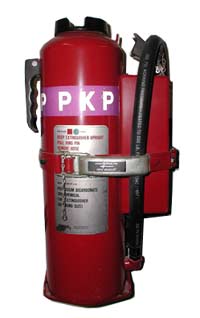
| |
| Names | |
|---|---|
| IUPAC name
potassium hydrogencarbonate
| |
| Other names
potassium hydrogencarbonate, potassium acid carbonate
| |
| Identifiers | |
3D model (JSmol)
|
|
| 4535309 | |
| ChEBI | |
| ChEMBL | |
| ChemSpider | |
| DrugBank | |
| ECHA InfoCard | 100.005.509 |
| EC Number |
|
| E number | E501(ii) (acidity regulators, ...) |
| KEGG | |
PubChem CID
|
|
| UNII | |
CompTox Dashboard (EPA)
|
|
| |
| |
| Properties | |
| KHCO3 | |
| Molar mass | 100.115 g/mol |
| Appearance | white crystals |
| Odor | odorless |
| Density | 2.17 g/cm3 |
| Melting point | 292 °C (558 °F; 565 K) (decomposes) |
| 22.4 g/100 mL (20 °C)[1] | |
| Solubility | practically insoluble in alcohol |
| Acidity (pKa) | 10.329[2]
6.351 (carbonic acid)[2] |
| Thermochemistry | |
Std enthalpy of
formation (ΔfH⦵298) |
-963.2 kJ/mol |
| Pharmacology | |
| A12BA04 (WHO) | |
| Hazards[3] | |
| GHS labelling: | |

| |
| Warning | |
| H315, H319, H335 | |
| P261, P264, P280, P302+P352, P304+P340, P305+P351+P338, P312, P332+P313, P362, P403+P233, P405 | |
| NFPA 704 (fire diamond) | |
| Flash point | Non-Flammable |
| Lethal dose or concentration (LD, LC): | |
LD50 (median dose)
|
> 2000 mg/kg (rat, oral) |
| Safety data sheet (SDS) | MSDS |
| Related compounds | |
Other anions
|
Potassium carbonate |
Other cations
|
Sodium bicarbonate Ammonium bicarbonate |
Related compounds
|
Potassium bisulfate Monopotassium phosphate Dipotassium phosphate |
Except where otherwise noted, data are given for materials in their standard state (at 25 °C [77 °F], 100 kPa).
| |
Potassium bicarbonate (IUPAC name: potassium hydrogencarbonate, also known as potassium acid carbonate) is the inorganic compound with the chemical formula KHCO3. It is a white solid.[1]

- ^ a b H. Schultz; G. Bauer; E. Schachl; F. Hagedorn; P. Schmittinger (2005). "Potassium Compounds". Ullmann's Encyclopedia of Industrial Chemistry. Weinheim: Wiley-VCH. doi:10.1002/14356007.a22_039. ISBN 3-527-30673-0.
- ^ a b Goldberg, Robert N.; Kishore, Nand; Lennen, Rebecca M. (2003). "Thermodynamic quantities for the ionization reactions of buffers in water". In David R. Lide (ed.). CRC handbook of chemistry and physics (84th ed.). Boca Raton, FL: CRC Press. pp. 7–13. ISBN 978-0-8493-0595-5. Retrieved 6 March 2011.
- ^ "Potassium bicarbonate". pubchem.ncbi.nlm.nih.gov.
